We may not have the course you’re looking for. If you enquire or give us a call on +08000201623 and speak to our training experts, we may still be able to help with your training requirements.
We ensure quality, budget-alignment, and timely delivery by our expert instructors.
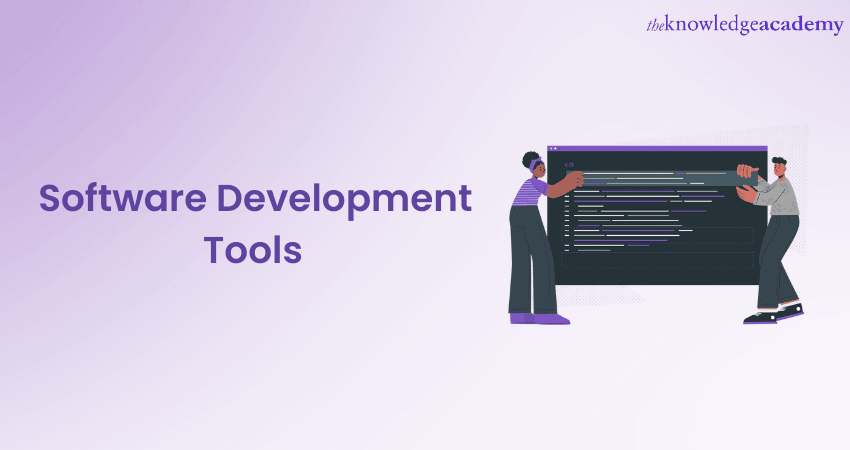
Are you a Software Developer or stepping up to be the first in Software Development? If yes, then you must be aware that there are some of the Best Software Development Tools available today to carry out your projects. Without them, you risk setbacks that can slow progress and impact your goals.
In this blog, we’ll explore the most effective Software Development Tools that can streamline your workflow, improve collaboration, and boost productivity. Whether you're coding, debugging, or managing deployments, these tools will help you work faster, smarter, and more efficiently. Let’s dive in!
Table of Contents
1) What are Software Development Tools?
2) Top 15+ Best Software Development Tools
a) Visual Studio Code
b) Eclipse
c) SQL Server Management Studio (SSMS)
d) Git
e) GitHub
f) Bitbucket
g) Trello
h) Travis CI
i) GitLab CI/CD
j) PyCharm
3) What are the Essential Software Development Tools for Beginners?
4) Can Software Development Tools Help with Collaboration in a Team?
5) Conclusion
What are Software Development Tools?
Software Development Tools, or "dev tools," are applications, frameworks, and platforms that assist developers at every stage of software creation. They help write, test, debug, and deploy code while ensuring smooth functionality.
Beyond coding, these tools support collaboration, version control, database management, UI/UX design, and deployment, forming the backbone of the IT industry. By streamlining processes, reducing errors, and enhancing productivity, they enable developers to build sophisticated and reliable software in today’s dynamic tech landscape.
Top 15+ Best Software Development Tools
Let us now discuss some of the best Software Development Tools that developers can use to effortlessly develop efficient software as a Software Developer:
1) Visual Studio Code
Category: IDE
Developer: Microsoft
Latest Version: 1.97 (January 2025)
Platform: Windows, macOS, Linux, Web
Price: Free (Open-source)
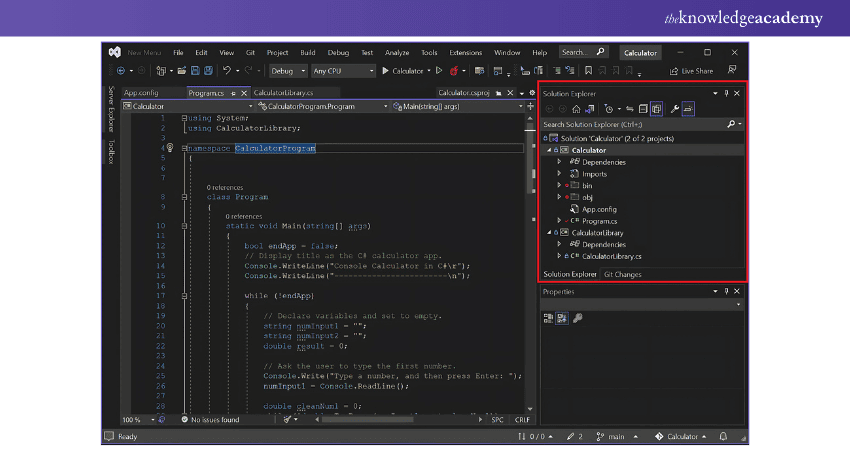
Overview:
A lightweight yet powerful code editor with extensive language support, customisation options, and seamless integration with development tools. It offers a clean interface, making coding more efficient while supporting modern development workflows.
Key Features:
a) IntelliSense: Smart code suggestions
b) Built-in Debugger: Streamlined testing
c) Extensions: Expansive marketplace for add-ons
d) Git Integration: Efficient version control
Why Developers Love It:
Fast, flexible, and feature-rich, VS Code enhances productivity across various programming disciplines.
Use Cases:
a) Web & Software Development (JavaScript, Python, Java)
b) Data Science (Jupyter, R)
c) DevOps (Docker, Kubernetes
2) Eclipse
Category: IDE
Developer: The Eclipse Foundation
Latest Version: 2024-12
Platform: Windows, macOS, Linux
Price: Free (Open source)
Overview:
A robust IDE, widely used for Java development but extensible to other languages via plugins. It supports enterprise and web application development through various frameworks.
Key Features:
a) Plugin Support: Customisable development environment
b) Code Refactoring: Smart tools for code maintenance
c) Debugger & Compiler: Integrated for various languages
Why Developers Love It:
Its flexibility and strong community support make it a top choice for Java and enterprise developers.
Use Cases:
a) Java Development (SE, EE, Android)
b) Cross-Platform Development (C++, PHP, Python)
c) Enterprise Applications (Spring, Hibernate)
Stay ahead in web development! Download the GraphQL PDF now and discover the benefits of using GraphQL for streamlined, efficient API development.
3) SQL Server Management Studio (SSMS)
Category: Database Management
Developer: Microsoft
Latest Version: 20.2 (July 2024)
Platform: Windows
Price: Free
Overview:
A powerful tool for managing Microsoft SQL Server, offering a GUI for database administration, monitoring, and debugging.
Key Features:
a) Query Editor: Advanced SQL writing and execution
b) Performance Tuning: Tools for analysing and optimising queries
c) Security Management: Role-based access control
Why Developers Love It:
Its deep integration with SQL Server simplifies database operations and performance monitoring.
Use Cases:
a) Database Administration (Monitoring, security)
b) Query Development (Stored procedures, views)
c) Data Analysis (SQL performance tuning)
4) Git
Category: Version Control System
Developer: Linus Torvalds & Open Source Community
Latest Version: 2.48.1 (January 2025)
Platform: Windows, macOS, Linux
Price: Free (Open-source)
Overview:
A distributed version control system that allows efficient collaboration and version tracking for codebases.
Key Features:
a) Branching & Merging: Work on features separately
b) Distributed Architecture: Full repository history on every device
c) Performance: Optimised for speed and flexibility
Why Developers Love It:
Reliable, scalable, and widely adopted in Software Development workflows.
Use Cases:
a) Source Code Management (Tracking changes)
b) Team Collaboration (Branching, merging)
c) Open-Source Development (Public repositories)
5) GitHub
Category: Version Control Hosting
Developer: GitHub, Inc.
Latest Version: Web-based
Platform: Web
Price: Free for public repositories; Paid for private
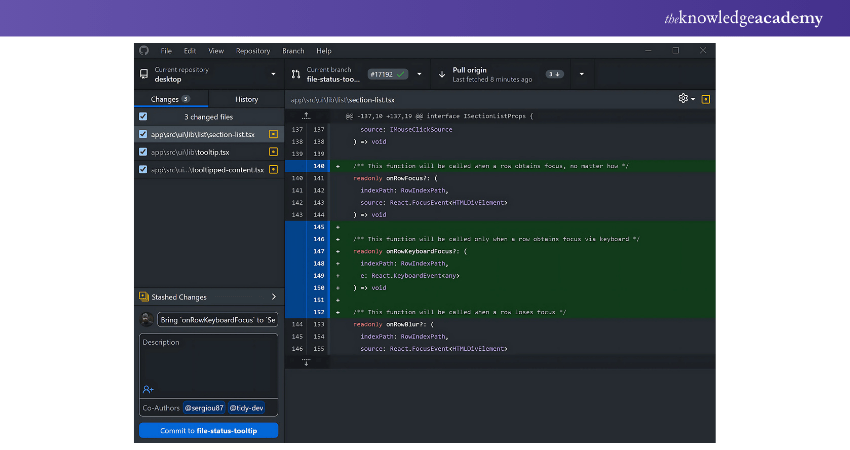
Overview:
A cloud-based Git repository hosting service with built-in project management, CI/CD, and collaboration tools.
Key Features:
a) Pull Requests: Code review and approval
b) Actions: Automated CI/CD workflows
c) Issue Tracking: Bug reporting and feature tracking
Why Developers Love It:
Great for collaboration, version control, and open-source contribution.
Use Cases:
a) Open-Source Projects (Community contributions)
b) Team Collaboration (Code reviews, discussions)
c) CI/CD Pipelines (Automated testing & deployment)
6) Bitbucket
Category: Version Control Hosting
Developer: Atlassian
Latest Version: N/A (Web-based)
Platform: Web
Price: Free for small teams; Paid for advanced features
Overview:
A Git-based repository hosting service focused on team collaboration, continuous integration, and security. It integrates seamlessly with Atlassian tools.
Key Features:
a) Pull Requests: Code collaboration and review
b) Bitbucket Pipelines: Built-in CI/CD
c) JIRA Integration: Project tracking and issue management
Why Developers Love It:
Great for teams using the Atlassian ecosystem and agile development practices.
Use Cases:
a) Enterprise Development (Secure private repositories)
b) CI/CD Workflows (Automated deployment)
c) Agile Project Management (JIRA integration)
7) Trello
Category: Project Management
Developer: Atlassian
Latest Version: N/A (Web-based)
Platform: Web, iOS, Android
Price: Free; Paid plans for premium features
Overview:
A visual project management tool that organises tasks using boards, lists, and cards, making collaboration simple.
Key Features:
a) Drag-and-Drop Boards: Intuitive workflow management
b) Automation: Butler for task automation
c) Integrations: Connects with Slack, GitHub, and JIRA
Why Developers Love It:
Lightweight, flexible, and easy to use for tracking Software Development tasks.
Use Cases:
a) Agile Development (Kanban-style task management)
b) Team Collaboration (Shared project boards)
c) Bug Tracking (Managing issue lists)
8) Travis CI
Category: CI/CD Tool
Developer: Travis CI GmbH
Latest Version: N/A (Cloud-based)
Platform: Web
Price: Free for open-source; Paid for private projects
Overview:
A cloud-based CI/CD tool that automates the building, testing, and deployment of applications.
Key Features:
a) Multi-language Support: Works with numerous programming languages
b) Parallel Builds: Run multiple test environments
c) GitHub Integration: Automate pull request testing
Why Developers Love It:
Simple to set up and fully integrated with GitHub repositories.
Use Cases:
a) Continuous Testing (Automated testing on commits)
b) Deployment Automation (Seamless code deployment)
c) Open-Source Projects (CI/CD for public repositories)
9) GitLab CI/CD
Category: CI/CD Tool
Developer: GitLab Inc.
Latest Version: 17.8 (January 2025)
Platform: Web, Linux, Windows
Price: Free for open-source; Paid for enterprise features
Overview:
A built-in CI/CD tool within GitLab that enables developers to automate testing, integration, and deployment.
Key Features:
a) Auto DevOps: Streamlined automation for Kubernetes and Docker
b) Built-in Security Scanning: Identifies vulnerabilities
c) Parallel Execution: Faster CI/CD pipelines
Why Developers Love It:
Seamless integration with GitLab repositories and robust DevOps capabilities.
Use Cases:
a) Software Deployment (Automated build and release)
b) DevSecOps (Security integration in CI/CD)
c) Containerized Applications (Kubernetes support)
10) PyCharm
Category: IDE
Developer: JetBrains
Latest Version: 2024.1 (March 2024)
Platform: Windows, macOS, Linux
Price: Free (Community Edition); Paid (Professional Edition)
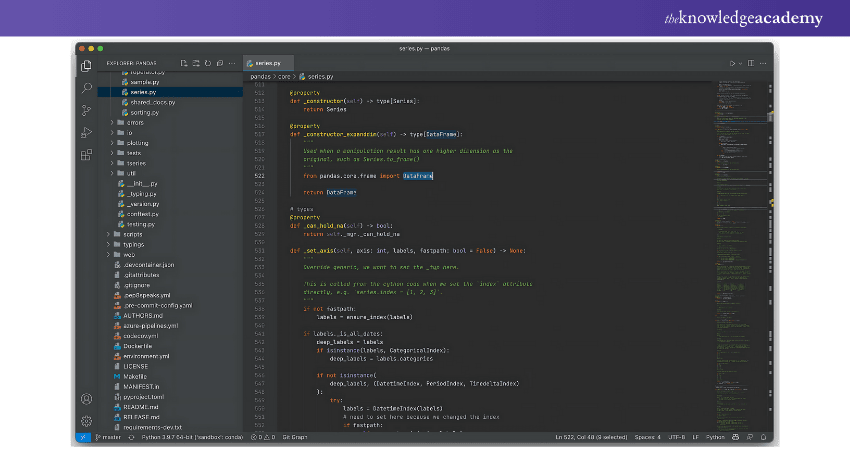
Overview:
A feature-rich Python IDE with smart code assistance, debugging, and scientific tools. Ideal for Python development.
Key Features:
a) Smart Code Completion: AI-powered suggestions
b) Debugger & Profiler: Advanced testing tools
c) Web Development Support: Django, Flask, and Pyramid integration
Why Developers Love It:
Optimised for Python with powerful debugging and testing tools.
Use Cases:
a) Web Development (Python frameworks)
b) Data Science (Jupyter Notebook support)
c) Machine Learning (TensorFlow, PyTorch development)
Craft impeccable software designs and architectures with our Java Programming and Software Engineering Fundamentals Training – join now!
11) MySQL Workbench
Category: Database Management
Developer: Oracle Corporation
Latest Version: 8.0.36 (2024)
Platform: Windows, macOS, Linux
Price: Free
Overview:
A unified visual tool for database development, administration, and data modelling.
Key Features:
a) Query Editor: Write and execute SQL queries
b) Database Design Tools: Model relationships visually
c) Performance Dashboard: Monitor database activity
Why Developers Love It:
Simplifies MySQL management with an intuitive UI and robust functionality.
Use Cases:
a) Database Administration (Server monitoring, backups)
b) SQL Development (Stored procedures, triggers)
c) Data Analysis (Optimising queries)
12) Slack
Category: Communication & Collaboration
Developer: Slack Technologies
Latest Version: N/A (Cloud-based)
Platform: Web, Windows, macOS, iOS, Android
Price: Free; Paid plans for premium features
Overview:
A messaging platform designed for teams to collaborate efficiently with channels, direct messages, and integrations.
Key Features:
a) Threaded Conversations: Organised discussions
b) Integration Hub: Connects with GitHub, JIRA, and more
c) File Sharing: Quick collaboration
Why Developers Love It:
Enhances team communication and integrates seamlessly with developer tools.
Use Cases:
a) Development Teams (Code discussions, alerts)
b) Remote Work (Real-time collaboration)
c) Project Management (Integrations with PM tools)
13) Jenkins
Category: CI/CD Automation
Developer: Jenkins Community
Latest Version: 2.440 (January 2025)
Platform: Windows, macOS, Linux
Price: Free (Open-source)
Overview:
Jenkins is an open-source automation server used for building, testing, and deploying software applications. It supports thousands of plugins for integration with various tools.
Key Features:
a) Pipeline as Code: Automate workflows with Groovy-based pipelines
b) Extensive Plugin Ecosystem: Supports integrations with Git, Docker, and Kubernetes
c) Distributed Builds: Scale across multiple machines
Why Developers Love It:
Highly flexible and customisable, making it ideal for DevOps automation.
Use Cases:
a) Continuous Integration (Automated code testing)
b) Continuous Deployment (Seamless software release management)
c) Infrastructure Automation (Orchestration with Docker and Kubernetes)
14) Selenium
Category: Automated Testing
Developer: Selenium Project
Latest Version: 4.16 (December 2024)
Platform: Windows, macOS, Linux
Price: Free (Open-source)
Overview:
Selenium is a widely used framework for automating web application testing across different browsers and platforms.
Key Features:
a) Cross-Browser Testing: Works with Chrome, Firefox, Edge, etc
b) Scripting in Multiple Languages: Supports Java, Python, C#, and more
c) Parallel Test Execution: Boosts efficiency in testing
Why Developers Love It:
Reduces manual testing efforts and accelerates the testing cycle.
Use Cases:
a) Web Application Testing (Automating UI testing)
b) Regression Testing (Ensuring updates don’t break functionality)
c) Performance Testing (Testing responsiveness)
15) JUnit
Category: Unit Testing Framework
Developer: JUnit Team
Latest Version: 5.10 (2024)
Platform: Java-based
Price: Free (Open-source)
Overview:
JUnit is a popular Java framework for unit testing, ensuring code quality and detecting errors early in development.
Key Features:
a) Annotations for Test Cases: Simplifies test writing
b) Assertions & Test Runners: Automates validation
c) Integration with CI/CD: Works with Jenkins, Maven, and Gradle
Why Developers Love It:
Encourages test-driven development (TDD) and improves software reliability.
Use Cases:
a) Java Application Testing (Validating methods and classes)
b) CI/CD Testing (Automated build testing)
c) Regression Testing (Ensuring new updates don’t break existing functionality)
16) Draw.io
Category: Diagramming & Modelling
Developer: JGraph Ltd.
Latest Version: N/A (Web-based)
Platform: Web, Windows, macOS, Linux
Price: Free
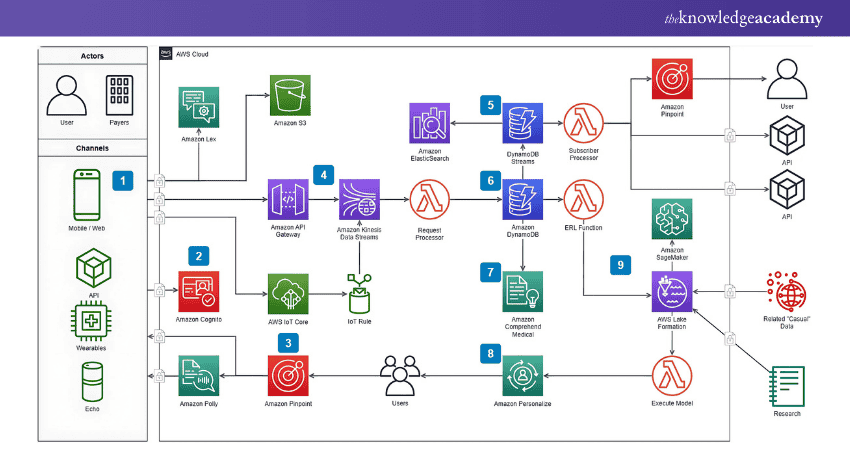
Overview:
A free, browser-based diagramming tool used for creating flowcharts, system architectures, and UML diagrams.
Key Features:
a) Drag-and-Drop Interface: Easy visual design
b) Cloud Integration: Saves to Google Drive, OneDrive
c) Templates & Export Options: PNG, SVG, PDF, and more
Why Developers Love It:
Simple yet powerful for designing system architectures and workflows.
Use Cases:
a) Software Architecture Design (UML, entity-relationship diagrams)
b) Project Planning (Workflow diagrams)
c) Network Topologies (Infrastructure planning)
17) JIRA
Category: Project Management & Issue Tracking
Developer: Atlassian
Latest Version: N/A (Cloud-based)
Platform: Web, Windows, macOS
Price: Free for small teams; Paid for enterprise features
Overview:
JIRA is a leading project management tool that is widely used for agile development, bug tracking, and team collaboration.
Key Features:
a) Scrum & Kanban Boards: Agile workflow support
b) Customisable Workflows: Adapt to team needs
c) Integrations: Connects with Bitbucket, Slack, and GitHub
Why Developers Love It:
Powerful tracking, reporting, and collaboration tools make it essential for software teams.
Use Cases:
a) Agile Project Management (Sprint planning, backlog grooming)
b) Bug & Issue Tracking (Managing software defects)
c) Software Development Workflows (Task assignments and tracking)
18) Docker
Category: Containerisation Platform
Developer: Docker Inc.
Latest Version: 24.0 (2024)
Platform: Windows, macOS, Linux
Price: Free; Paid plans for enterprise features
Overview:
Docker is a containerisation platform that enables developers to package applications and their dependencies into portable containers.
Key Features:
a) Lightweight Containers: Faster and more efficient than VMs
b) Portability: Runs anywhere—local, cloud, or on-prem
c) Integration with CI/CD: Works with Kubernetes, Jenkins
Why Developers Love It:
Ensures consistency across development, testing, and production environments.
Use Cases:
a) Microservices Deployment (Lightweight app containers)
b) CI/CD Pipelines (Automated build & deployment)
c) Cloud-Native Development (Kubernetes orchestration)
19) Postman
Category: API Development & Testing
Developer: Postman Inc.
Latest Version: 10.18 (2024)
Platform: Web, Windows, macOS, Linux
Price: Free; Paid plans for teams
Overview:
A collaborative API testing tool used for building, testing, and documenting APIs efficiently.
Key Features:
a) Automated Testing: Run pre-built API test cases
b) Mock Servers: Simulate API behaviour
c) Collaboration Tools: Share APIs with teams
Why Developers Love It:
Simplifies API testing and documentation, making it a must-have for backend developers.
Use Cases:
a) REST & GraphQL API Testing (Validating API requests and responses)
b) Automated Workflows (Pre/Post-request scripts)
c) API Documentation (Sharing with stakeholders)
20) IntelliJ IDEA
Category: IDE
Developer: JetBrains
Latest Version: 2024.1 (March 2024)
Platform: Windows, macOS, Linux
Price: Free (Community Edition); Paid (Ultimate Edition)
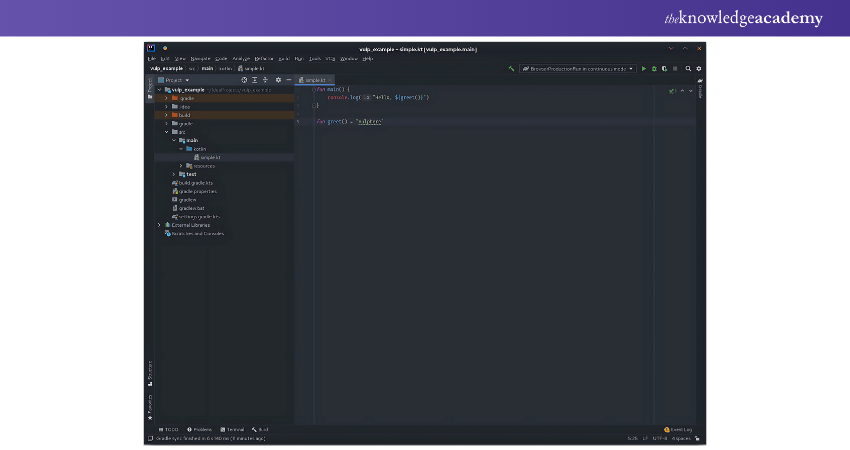
Overview:
A high-performance Java IDE designed for professional developers, offering intelligent code completion and seamless framework support.
Key Features:
a) Smart Code Assistance: AI-powered suggestions
b) Advanced Debugging & Profiling: Optimised performance monitoring
c) Framework Support: Spring, Hibernate, Java EE, etc
Why Developers Love It:
Best-in-class productivity features and deep Java ecosystem integration.
Use Cases:
a) Enterprise Java Development (Spring Boot, Hibernate)
b) Android Development (Seamless integration with Android SDK)
c) Cloud & Microservices (Kubernetes, Docker support)
Master Agile Software Development and enhance your efficiency with expert-led Agile Software Development Training today!
What are the Essential Software Development Tools for Beginners?
Beginners should start with Visual Studio Code (IDE), Git & GitHub (version control), SQL Server Management Studio (database management), and Postman (API testing). JIRA or Trello can help with project tracking, ensuring an organised learning experience.
Can Software Development Tools Help with Collaboration in a Team?
Yes, Software Development Tools greatly enhance team collaboration:
a) GitHub, GitLab, and Bitbucket: Enable version control and collaborative coding.
b) Slack, JIRA, and Trello: Improve communication and project management.
c) CI/CD tools like Jenkins: Streamline workflows and automate testing and deployment, making collaboration more efficient.
Conclusion
Choosing the Best Software Development Tools can help you achieve your desired targets and carry out your projects efficiently. With innovation, adaptability, and efficiency, these tools keep you ahead in a rapidly evolving tech landscape. They enhance work quality and significantly improve web development, ensuring seamless, high-performance solutions.
Learn the complete Software Development Lifecycle to enhance your coding, testing, and deployment skills – register in Software Development Lifecycle Training today!
Frequently Asked Questions
How Do I Choose the Right Software Development Tools for My Project?

Consider project requirements, team size, and technology stack. Choose an IDE like VS Code for coding, GitHub for version control, JIRA for project management, and Jenkins for automation. Scalability and integration with existing tools are key factors.
How Do Software Development Tools Improve Productivity?

Software Development Tools enhance productivity by:
a) Automating Repetitive Tasks
b) Streamlining Collaboration
c) Enhancing Code Quality
d) Providing Real-time Tracking
e) Boosting Efficiency
f) Ensuring Faster Deployments
What are the Other Resources and Offers Provided by The Knowledge Academy?

The Knowledge Academy takes global learning to new heights, offering over 3,000 online courses across 490+ locations in 190+ countries. This expansive reach ensures accessibility and convenience for learners worldwide.
Alongside our diverse Online Course Catalogue, encompassing 19 major categories, we go the extra mile by providing a plethora of free educational Online Resources like News updates, Blogs, videos, webinars, and interview questions. Tailoring learning experiences further, professionals can maximise value with customisable Course Bundles of TKA.
What is The Knowledge Pass, and How Does it Work?

The Knowledge Academy’s Knowledge Pass, a prepaid voucher, adds another layer of flexibility, allowing course bookings over a 12-month period. Join us on a journey where education knows no bounds.
What are the Related Courses and Blogs Provided by The Knowledge Academy?

The Knowledge Academy offers various Software Engineering Courses, including Software Development Lifecycle Training, Agile Software Development Training and Software Design and Architecture Training. These courses cater to different skill levels, providing comprehensive insights into Software Engineer Salary.
Our Programming & DevOps Blogs cover a range of topics related to Software Development, offering valuable resources, best practices, and industry insights. Whether you are a beginner or looking to advance your Software Development skills, The Knowledge Academy's diverse courses and informative blogs have got you covered.
Upcoming Programming & DevOps Resources Batches & Dates
Date
 Systems Engineering Training
Systems Engineering Training
Fri 21st Feb 2025
Fri 4th Apr 2025
Fri 6th Jun 2025
Fri 29th Aug 2025
Fri 24th Oct 2025
Fri 26th Dec 2025






 Top Rated Course
Top Rated Course



 If you wish to make any changes to your course, please
If you wish to make any changes to your course, please


